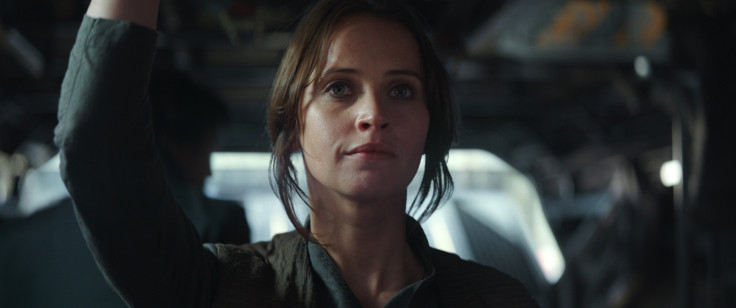F for feminist: How a new movie ratings system is showcasing the work of women in film
New ratings system showcases the work of women in the film industry.
While Oscar-winning movie Moonlight has been rightly championed as a success for diversity, there is still a glaring inequality that continues to plague Hollywood, the representation of women both in front of and behind the camera.
A recent report by the Center for the Study of Women in Television & Film found less than a third of the top-100 grossing movies of last year had female leads, with only 7% of the same films being directed by a woman.
Now a new ratings system is gaining popular attention as a means of showcasing the work of women in film. The F-rating, devised by Bath Film Festival executive director Holly Tarquini, is applied to all films which are directed by women and / or written by women and / or have significant women on screen.
"We created the F-rating in 2014 at the Bath Film Festival and at first we looked at just using the Bechdel test, so looking at films which have two women who have a conversation about something other than a man. It's a phenomenally basic requirement, which most films don't pass," Tarquini tells IBTimes UK.
"But the Bechdel test doesn't tell you anything really about what's going on on-screen and it certainly doesn't tell you who's telling the stories. So we developed the F-rating to highlight the films where the storytellers and the significant characters are women," she said.
Rather than judging the quality of a film or it's suitability, the main goal of the classification is to highlight films with significant input from women.

Recent examples of F-rated films include Star Wars movie Rogue One, where Felicity Jones played the leading role, A United Kingdom, directed by Britain's Amma Asante and Hidden Figures, written by Allison Schroeder. The gold standard triple F-rated films, which features all three, include comedy Pitch Perfect 2 and Disney's smash hit Frozen.
"Some of the films that are F-rated but you might not think of as F-rated include Point Break which was directed by Kathryn Bigelow: Kingsman and Kickass were written by Jane Goldman and Shame with Michael Fassbender, which feels like a very masculine film, was actually written by Abbie Morgan. So there are lots of big blockbuster films that are F-rated, it's not just the more interesting nuanced films," says Tarquini.

Since its inception at the Bath Film Festival the F-rating has spread across the UK, with 40 venues across the country now adopting the classification. The movement went digital in March when the Internet Movie Database (IMDb), an online database of information related to films, announced they too had adopted the F-rating on their site.
It might seem a small gesture, but Tarquini is adamant that highlighting films in this way will hopefully spark a gear change in the industry, as well as allow audiences to appreciate which films have significant input from women.

"The reason I think it's important is to have women telling stories, and women on screen, is that we are really influenced by the stories we see on-screen. A really simple example of that is after Brave and The Hunger Games came out in the States, there was a 75% rise in girls taking up archery," Tarquini says.
The next step would be for mainstream cinemas and distributors both in the UK and across the world to get on board and display the rating, something which hasn't happened yet. But as more and more people adopt the classification, the more awareness will be raised about the 'celluloid ceiling' that still hangs above Hollywood.
© Copyright IBTimes 2025. All rights reserved.






















